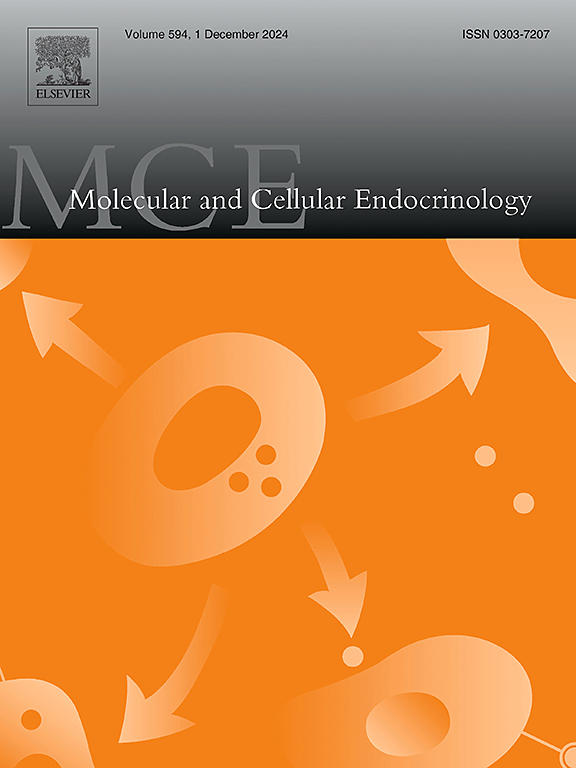The impact of mineralocorticoid and glucocorticoid receptor interaction on corticosteroid transcriptional outcomes
IF 3.8
3区 医学
Q2 CELL BIOLOGY
引用次数: 0
Abstract
The mineralocorticoid and glucocorticoid receptors (MR and GR, respectively) are members of the steroid receptor subfamily of nuclear receptors. Their main function is to act as ligand-activated transcription factors, transducing the effects of corticosteroid hormones (aldosterone and glucocorticoids) by modulating gene expression. Corticosteroid signaling is essential for homeostasis and adaptation to different forms of stress. GR responds to glucocorticoids by regulating genes involved in development, metabolism, immunomodulation and brain function. MR is best known for mediating the effects of aldosterone, a key hormone controlling electrolyte and water homeostasis. In addition to aldosterone, MR binds glucocorticoids (cortisol and corticosterone) with equally high affinity. This ligand promiscuity has important repercussions to understand MR function, as well as glucocorticoid signaling. MR and GR share significant sequence and structural similarities, regulate overlapping sets of genes and are able to interact forming heteromeric complexes. However, the precise role of these heteromers in regulating corticosteroid-regulated transcriptional outcomes remains an open question. In this review, we examine the evidence supporting MR-GR heteromerization, the molecular determinants of complex formation and their possible role in differential regulation of transcription in different cellular contexts and ligand availability.
矿物皮质激素和糖皮质激素受体相互作用对皮质类固醇转录结果的影响。
矿质类固醇受体和糖皮质激素受体(分别为 MR 和 GR)是核受体中类固醇受体亚家族的成员。它们的主要功能是作为配体激活的转录因子,通过调节基因表达来传递皮质类固醇激素(醛固酮和糖皮质激素)的效应。皮质类固醇信号转导对于平衡和适应不同形式的压力至关重要。GR 通过调节涉及发育、新陈代谢、免疫调节和大脑功能的基因对糖皮质激素做出反应。醛固酮是一种控制电解质和水分平衡的关键激素,MR 因其介导醛固酮的作用而最为人熟知。除醛固酮外,MR 还能以同样高的亲和力与糖皮质激素(皮质醇和皮质酮)结合。这种配体杂合性对了解 MR 的功能以及糖皮质激素的信号转导具有重要影响。MR和GR在序列和结构上有很大的相似性,调控重叠的基因集,并能相互作用形成异构体复合物。然而,这些异构体在调节皮质类固醇调控的转录结果中的确切作用仍是一个未决问题。在这篇综述中,我们将研究支持 MR-GR 异构化的证据、形成复合物的分子决定因素及其在不同细胞环境和配体可用性下对转录的不同调控中可能发挥的作用。
本文章由计算机程序翻译,如有差异,请以英文原文为准。
求助全文
约1分钟内获得全文
求助全文
来源期刊

Molecular and Cellular Endocrinology
医学-内分泌学与代谢
CiteScore
9.00
自引率
2.40%
发文量
174
审稿时长
42 days
期刊介绍:
Molecular and Cellular Endocrinology was established in 1974 to meet the demand for integrated publication on all aspects related to the genetic and biochemical effects, synthesis and secretions of extracellular signals (hormones, neurotransmitters, etc.) and to the understanding of cellular regulatory mechanisms involved in hormonal control.
 求助内容:
求助内容: 应助结果提醒方式:
应助结果提醒方式:


